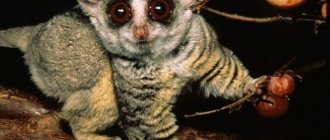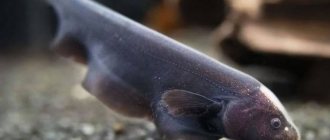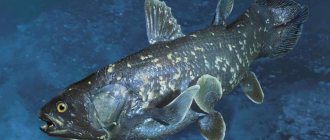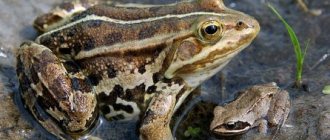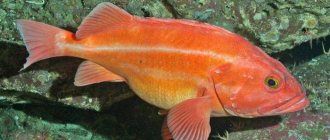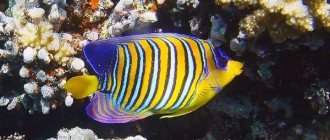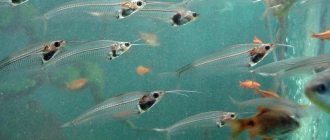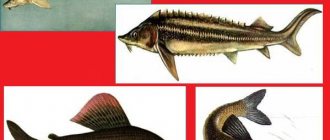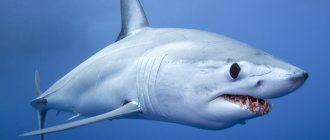People make a lot of noise - mainly from land, water and air vehicles. In February 2022, scientists announced that noise pollution brings the most trouble to the inhabitants of the seas and oceans. It may be hard for some to believe, but some mammals can even be physically injured by sound waves. Scientists also know that various kinds of noise prevent animals from escaping predators and getting food. Recently, scientists from Portugal decided to test whether the sounds of ships and other waterborne equipment could somehow affect the ability of animals to reproduce. To do this, they conducted two experiments with toad fish - one of the strangest-looking living creatures. Let's figure out what the essence of the experiment was and what conclusions did the scientists come to?
The world is full of amazing creatures. In the photo there is a toad fish
Habitat
Originates from the Indo-Pacific region, its habitat extends from Australia in the south to Thailand in the north.
They live in coastal waters, mangrove estuaries, and in the lower reaches of rivers flowing into the seas. The natural environment is characterized by soft silted substrates and an abundance of shelters in the form of snags and roots. The bottom, as a rule, is littered with various plant debris and other organic matter. Brief information:
- Aquarium volume - from 300 liters.
- Water and air temperature - 22–28°C
- pH value – 7.8–8.5
- Water hardness - medium to high hardness (15–35 dGH)
- Substrate type - sandy, silted
- Lighting - moderate
- Brackish water - yes, in a concentration of 5–20 g. for 1 liter of water
- Water movement - weak, moderate
- The size of the fish is about 30 cm.
- Food - meat feed
- Temperament - peaceful
- Contents individually
- Life expectancy is about 20 years
Zebra fish
The zebra fish, or striped lionfish, is a species of ray-finned fish of the scorpionfish family. These are predatory fish armed with poisonous spines. The maximum size of lionfish reaches 48.8 cm, on average these fish grow up to 45 cm. Zebra fish live in the tropical regions of the Indian and Pacific oceans. The largest populations are observed off the coasts of Japan, China and Australia.
Zebra fish: Wikipedia
The fish uses dangerous spines for self-defense. When threatened, she turns over and injects with poison. A person who receives such an injection feels severe, sharp pain at the injection site and in the head. The poison causes vomiting and difficulty breathing. Without timely medical care, a person dies.
Zebra fish has very tasty and tender meat. Because of this, it becomes an important fishing target. Today, the lionfish population is not in danger, but the zebra fish itself poses a serious threat to coral reefs and their inhabitants.
Description
Adults reach a length of up to 30 cm, with a third of the body being the head, covered with numerous growths. The pectoral fins are large and are designed not only for swimming, but also serve as limbs for moving along the soft bottom. The tail is small and round in shape. The dorsal fin is divided into two and extends as a ridge throughout the body. The color is heterogeneous dark brown. Sharp spines are hidden in the skin; the fish bristles with them in case of danger. This unusual appearance serves one purpose - to disguise itself as a stone overgrown with algae or any other lump.
Reproduction
Reproduction is quite interesting: fish create strong pairs and are monogamous. They take good care of the offspring: both parents will be present at the clutch, protecting it, until the fry appear. And after that, they don’t immediately leave the kids, but stay with them for a while.
They are slow and move extremely reluctantly. They have no commercial value, but have found use as an exotic decoration for aquariums.
Nutrition
Relying on its camouflage, the three-spined toadfish can remain motionless for a long time, waiting for prey to swim nearby. If the victim is too close, a lightning-fast reaction will follow and it will be swallowed. In the wild, the diet is very varied and consists of fish, crabs, shrimp, octopus, bivalves, snails, sea urchins and polychaetes. The home aquarium will accept bloodworms, earthworms, fish meat (for example, regular pollock from the store) and shrimp. The frequency of meals is 1–2 times a week, which is quite sufficient and corresponds to the diet in nature.
Toadfish
The toadfish is a predatory species of the toadfish genus of the batrachidae family. They live in the western regions of the Atlantic Ocean. The body length of the fish is about 40 cm, weight reaches 2 kg. The favorite hunting tactic of these fish is to burrow into the muddy or sandy bottom. Because of this, you can accidentally step on the fish. The fish has poisonous spines on its back, the injection of which is very painful. The fish makes loud beeping sounds, which can be painful to the ear up close.
Toadfish: Wikipedia
Toadfish not only pose a danger to humans, but sometimes served him for scientific purposes. In 1998, NASA launched several toadfish into space on the space shuttles Columbia and Discovery and observed the behavior of marine inhabitants in zero gravity.
Maintenance and care, arrangement of the aquarium
Taking into account the size of an adult individual and a sedentary lifestyle, an aquarium of 300 liters or more is suitable for keeping. There is no need to recreate the silted beaches characteristic of the natural habitat. In the design you can use gravel with large boulders and other dark soil. The presence of snags and aquatic vegetation is welcome. Plants must be adapted to grow in brackish conditions. The aquarium should contain brackish water with a salt concentration of 5 to 20 grams per 1 liter of water. Fish will not survive long in fresh water. Successful management depends on maintaining stable water conditions. In addition to maintaining the filtration system, regular removal of organic waste and weekly partial water changes of 25 to 50% or more should be ensured. Volumes depend on salinity and number of inhabitants. The specifics of caring for such an aquarium are determined individually, so it is impossible to give precise instructions.
Puffer fish
What is the most poisonous fish in the world? The Guinness Book of Records lists the most poisonous fish in the world as fish from the pufferfish family, or dog fish. The caviar, skin and liver of puffer fish (dogfish) contain a dose of tetrodotoxin that is lethal to humans. The fish does not produce the dangerous poison itself, but rather secretes it from its diet and accumulates it. Encyclopedia Britannica lists fish as one of the ten most dangerous fish for humans.
Where does the most poisonous fish in the world live? Puffer fish has a wide range. It can be found in the northwestern regions of the Pacific Ocean, as well as in fresh Asian rivers of the Indo-Pacific basin.
Puffer fish: Wikipedia
Fish are well known not only to biologists and gourmets around the world. The dogfish is used to produce a popular Japanese dish, fugu. Most often it is prepared from the most common and very poisonous type of fish - brown rockfish. To prepare this dangerous delicacy, Japanese chefs have to study for a long time and must obtain a government license.
An error in preparation can lead to painful death from paralysis and suffocation. The paralyzed person remains conscious until death. There is no antidote for tetrodotoxin, although a person can be saved using artificial life support. Every year, about 5 people die because of the dangerous delicacy fugu.
Taxonomy[edit]
Frogfishes belong to the order Lophiiformes, commonly known as anglerfish, which is included in the superorder Paracanthopterygii along with four other orders. They belong to the infraclass Teleostei, bony fishes classified in the class Actinopterygii. There are two subfamilies, Antennariinae and Histiophryninae, which differ in their distribution and mode of reproduction.
- Commerson's frogfish, Kona, Hawaii, Antennarius commerson
- Ocellated frogfish, Bonaire, Netherlands Antilles, A. ocellatus
- Red ocellated Clownfish, St. Kitts, F. peephole
- Frogfish, bonaire, A. multiocellatus
- Scarlet frogfish, A. coccineus
- Painted frogfish, A. pictus
- Warty frogfish, A. maculatus
Fossil record[edit]
Very few frogfish fossils have been found. In the northern Italian formation at Monte Bolque, formed by the deposition of the Tethys Ocean in the mid-Eocene (45 million years ago), a fossil measuring 3 cm (1.2 in)
) called
Histionotophorus bassani
were originally described as frogfish, but they were later thought to belong to the closely related modern genus
Brachionichthys
or Handfish.
A 2005 fossil from Miocene Algeria (3 to 23 million years ago), Antennarius monodi
, is the first proven frogfish fossil and is believed to be most closely related to the extant Senegalese frogfish.
[14] In 2009, a new fossil from the Early Eocene Upper Ypresian discovered at Monte Bolca, Italy, was described as a new species, Eophryne barbuttii
, and is the oldest known member of this family. [15]
sea lady
Another representative of the dangerous poisonous fish of the dragon-like order is seaweeds, or stargazers. The family includes about 50 species of fish, all of which are poisonous. Predators live in the seas and estuaries in the warm zones of the Atlantic, Indian and Pacific oceans. The predator is predominantly nocturnal, and during the day it burrows into bottom silt or sand.
Seabird: Wikipedia
The maximum body length is 90 cm. Some species rarely exceed 22 cm in length, for example the European stargazer. The scales of the fish are small or almost absent. It is not eaten, so the venom of the sea cow is dangerous only for swimmers. Stargazers have poisonous spines on their bodies, which are connected to poisonous glands. In addition, fish have electrical organs and are capable of creating a discharge that is not dangerous to humans.
The most poisonous fish in the world can injure and even kill people. When you go on vacation to warm countries or order an exotic dish in a restaurant in a foreign country, avoid the most dangerous poisonous fish on the planet.
Original article: https://www.nur.kz/leisure/interesting-facts/1116506-smertelno-vkusno-fugu-samaya-yadovita/
Trunk fish
The bodyfish class of ray-finned fish is a family of toxic fish. Due to the characteristic shape of their “beak” they are called trunk fish. The body length of different species varies from 11 to 55 cm. The body is protected by a shell made of hexagonal-shaped bone plates. The skin is bare and covered with mucus. Bodyfish live in tropical regions of the Pacific, Indian and Atlantic oceans. They can be found in tourist areas of the Red Sea and off the coast of Australia.
Trunk fish: Wikipedia
Fish are capable of producing a special neurotoxin - pachutoxin. It spreads through the skin and mucus of the animal, quickly dissolves in water and poisons surrounding fish. Since the poison is contained in the tissues of fish meat, it is dangerous to eat. Proper processing neutralizes toxins and makes fish meat edible. Fish occupies an important place in the local fishery.
Movement[edit]
Longlur frogfish adjusts its jaw
Frogfish usually do not move very much, preferring to lie on the seabed and wait for prey to approach. Once it spots prey, it can slowly approach, using its pectoral and pelvic fins to move along the floor. [8] [10] They rarely swim, preferring to scramble along the seafloor with their fins using one of two "gaits". [6] In the first, they alternately advance their pectoral fins forward, propelling themselves like bipedal quadrupeds, leaving the pelvic fins outward. Alternatively, they may move in something like a slow gallop, in which they move their pectoral fins forward and backward simultaneously, transferring their weight to the pelvic fins while simultaneously moving their pectoral fins forward. They can only cover short distances with any gait.
In open water, frogfish can swim by flapping their caudal fin. They also use a jet engine, often used by young frogfish. They do this by rhythmically swallowing water and expelling it through their gill openings, also called orbital openings, which are located behind their pectoral fins. [10]
The Sargassum frogfish has adapted fins that can capture strands of Sargassum, allowing it to "climb" through the algae. [2]
